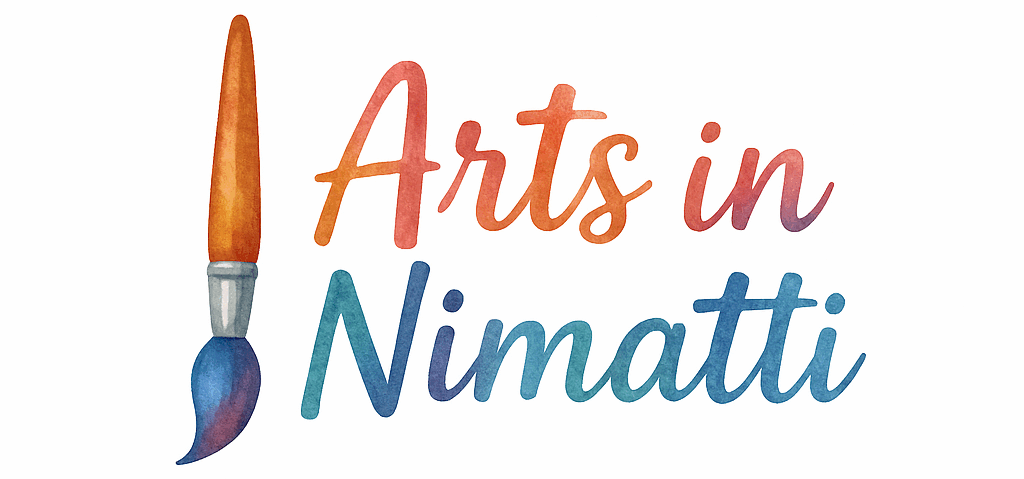Why Branding is Crucial for Artists
As an artist, establishing a unique presence in a crowded marketplace is essential. But how do you differentiate yourself and attract clients? A strong personal brand can help you do just that. Your brand is more than just a logo—it’s the essence of who you are and what you stand for. By building a distinct brand, you’ll build trust, loyalty, and ultimately grow your art business.
For artists looking to elevate their brand, you can explore more on how art education can help you develop a more focused approach.
Understanding Branding for Artists
Branding for artists isn’t limited to just your logo or tagline—it’s about the emotional connection you create with your audience. It’s how people perceive your work and your story. A strong brand helps make you memorable, sets you apart, and allows you to communicate your artistic values to a wider audience.
Having a clear understanding of your artist lifestyle will significantly impact your branding strategy, as it informs the way you approach your audience and your art.
The Importance of a Unique Brand Identity
A unique brand identity ensures that your work is instantly recognizable. Whether it’s your artistic style, your philosophy, or your creative process, having a distinct identity helps you resonate with your audience and builds loyalty over time. When people see your work, they should immediately know it’s yours.
1. Define Your Artistic Style
Discovering Your Unique Artistic Voice
The first step in creating a strong brand is identifying your artistic style. What makes your work different? What themes or subjects do you consistently explore? Finding your unique artistic voice helps people recognize and connect with your work more deeply. Whether you’re drawn to art techniques or a particular style, understanding your unique approach will shape how others perceive you as an artist.
How to Refine Your Artistic Style
Refining your style comes from experimentation and practice. It’s a journey that requires time, dedication, and introspection. Explore different mediums and techniques, and over time, you’ll notice patterns in your work. Consistency is key when it comes to building a recognizable style.
2. Develop a Memorable Logo and Visual Identity
Creating a Logo That Represents Your Art
Your logo is often the first impression people have of your brand, so it’s essential to make it memorable. Ensure that your logo aligns with your artistic style and communicates your message clearly. A creative portfolio may be a great tool to showcase how your visual identity evolves.
Consistency in Visual Identity
Once you have a logo, consistency is key. Whether you’re sharing images of your artwork on art travel adventures or updating your art tutorials, your visual identity should remain consistent. The colors, fonts, and design choices should align with your artistic voice, reinforcing the connection between you and your audience.
3. Build an Engaging Online Presence
Utilizing Social Media for Artists
Social media is an invaluable tool for artists to connect with potential clients and fans. Platforms like Instagram, Pinterest, and Facebook allow you to showcase your work to a broad audience. Regularly post behind-the-scenes content, engage with your followers, and create posts that reflect your unique style. This constant engagement helps solidify your artist life as part of your brand.
Creating a Professional Website
A professional website serves as the foundation of your online presence. It’s where clients can find more about you, view your portfolio, and purchase art directly. Your website should reflect your personal brand and serve as an effective marketing tool. Don’t forget to incorporate ecommerce features to facilitate online art sales.

4. Establish Your Online Store
Selling Art Online Effectively
Once you have a website and social media presence, setting up an online store allows you to sell your art to a global audience. Platforms like Etsy, Shopify, and your own website can provide an easy way to sell and ship your work. Consider adding features like limited edition releases or custom requests for added appeal.
Best Platforms for Online Art Sales
While platforms like online art sales offer broad reach, creating your own store gives you more control over the brand experience. Shopify and Squarespace are great for building a personalized storefront, while Etsy is ideal for artists looking to tap into an established marketplace.
5. Leverage Content Marketing
Using Blogs to Showcase Your Art
Content marketing is a powerful way to engage your audience and attract potential clients. Start a blog where you can share insights about your work, the inspiration behind your pieces, or even tips on painting techniques. Blog posts help position you as an expert in your field and build trust with your audience.
Creating Value-Added Content for Your Audience
Your content should be designed to provide value. You can write about topics related to your art, such as art history or the process behind creating a piece. These value-driven pieces will not only attract art lovers but will help establish you as an authority in the art world.
6. Network with Other Artists and Collaborate
Building Connections with Fellow Artists
Collaboration can elevate your brand and expand your reach. By networking with fellow artists, you expose yourself to new audiences who may be interested in your work. Whether it’s through online art classes or community events, working together allows you to learn and grow while introducing your work to new potential clients.
Collaborative Projects to Gain Exposure
Collaborating with other artists, galleries, or brands opens doors to new opportunities. Consider joint art shows, collaborations for exclusive releases, or guest appearances in art tutorials to expand your network and increase exposure.
7. Develop a Strong Artist Portfolio
What to Include in Your Portfolio
A strong portfolio is essential for attracting clients. Your portfolio should showcase your best work, highlight the range of your skills, and demonstrate your style. Make sure your portfolio is easy to navigate and reflects your creative habits.
Building a Portfolio That Attracts Clients
Ensure your portfolio tells a story. Include a variety of pieces that showcase your artistic journey and range. Consider updating your portfolio regularly to reflect your latest projects and keep your clients engaged.
8. Tell Your Story – Personal Branding Matters
Why Sharing Your Artistic Journey is Key
People love to connect with the story behind the art. By sharing your personal journey, struggles, and triumphs, you create an emotional connection with your audience. A strong personal narrative makes your brand relatable and humanizes your work.
Crafting Your Personal Story for Marketing
Craft your story in a way that resonates with potential clients. Share the motivations behind your art, the inspiration you draw from, and how your journey as an artist has shaped your work.
9. Offer Exclusive Art Products and Services
Creating Limited Edition Artworks
Offering exclusive art pieces can help you stand out and attract clients who are looking for something unique. Limited edition prints, exclusive commissions, or customized artworks are excellent ways to make your brand feel more personal.
Specialized Services You Can Offer
In addition to original artwork, consider offering services like art business consulting or personalized artwork creation. These specialized services will appeal to clients who want something beyond just a piece of art.
10. Use Email Marketing to Stay in Touch
Building an Email List for Your Art Business
Email marketing is one of the best ways to keep in touch with your clients and audience. By building an email list, you can share updates, promotions, and new artwork directly with your audience. Offer a freebie, like a downloadable art print, to encourage sign-ups.
Crafting Email Campaigns That Convert
Effective email campaigns should be tailored to your audience’s interests. Share new collections, behind-the-scenes insights, or exclusive offers to keep them engaged. Keep your emails visually appealing and focused on your brand identity.
11. Consistently Engage with Your Audience
Responding to Comments and Messages
Engaging with your audience is vital to building a strong community. Respond to comments, messages, and questions, and show appreciation for your followers. This interaction creates a sense of connection and loyalty.
Creating Interactive Content to Boost Engagement
Host Q&A sessions, surveys, or interactive content that invites your audience to participate. This not only strengthens your brand but also fosters a sense of community among your followers.
Conclusion: Building a Strong Artist Brand
Building a brand as an artist isn’t an overnight task, but with time, consistency, and strategic effort, you can create a brand that resonates with your audience and stands out in the art world. The key to success lies in defining your unique artistic voice, establishing a strong online presence, and staying true to your personal journey.
Key Takeaways for Successful Branding as an Artist
- Define your artistic style and voice.
- Create a memorable logo and consistent visual identity.
- Build a strong online presence with social media and a professional website.
- Develop a compelling portfolio that highlights your best work.
- Engage with your audience and network with other artists.
- Offer exclusive products and services to stand out.
FAQs
- How do I find my unique artistic style? Experiment with different mediums, subjects, and techniques until you discover what feels most authentic to you. Over time, patterns will emerge that will define your style.
- What should be included in an artist portfolio? Your portfolio should showcase your best and most recent works. It should also tell the story of your artistic journey and the evolution of your style.
- How can I promote my art online? Utilize social media platforms, create a professional website, and consider using email marketing to stay in touch with your audience.
- Should I collaborate with other artists? Yes! Collaboration can help you reach new audiences, build valuable relationships, and enhance your artistic skills.
- How often should I update my art portfolio? Regularly update your portfolio with new works to keep it fresh and relevant. Aim for at least a few updates every year.
- How do I create a memorable artist logo? Focus on simplicity and alignment with your artistic style. Your logo should be easy to remember and represent your brand visually.
- What is the best way to sell my art online? Use platforms like Etsy, Shopify, or even your website to sell your art. Make sure to showcase high-quality images and offer excellent customer service.

